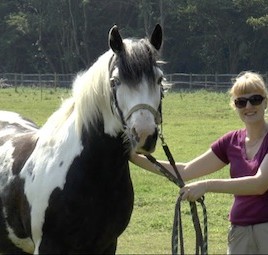A new study shows that horses rely on both the eyes and the ears of fellow horses in order to understand where their attention is directed. Horses were presented with a life-sized photograph of a horse that was pointing toward one of two buckets full of food. They tended to choose the bucket toward which […]
Tag: animal behaviour
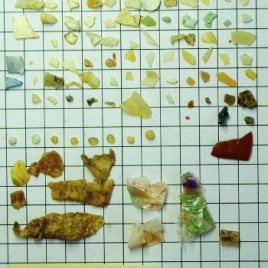
Researchers call for more studies on plastic in seabirds
Ingestion of plastic by seabirds is a serious problem, but research into the issue is patchy, according to a new review paper. Of the 91 seabird species in Canada, 33 have at least one reported case of plastic ingestion, however detailed data on plastic ingestion over time is available for only 6 species. Plastic ingestion […]
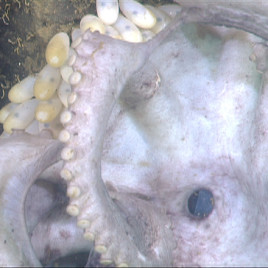
Deep-sea octopus broods eggs for over 4 years
A new study documents the case of a deep-sea octopus who tended her eggs for nearly 4.5 years, by far the longest egg-brooding period ever reported for any animal species. The octopus was first spotted a remote controlled underwater in a submarine canyon of the coast of California in 2007. Researchers returned regularly until the eggs […]
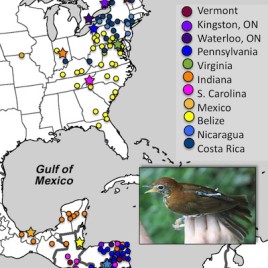
Wood thrushes ‘leap-frog’ during migration
Researchers have published the first detailed migratory map for different populations of wood thrushes. Over 100 birds were tracked using geolocators, a kind of ‘bird backpack’ that records sunrise and sunset times. Among other things, researchers found that the birds which travelled furthest north in the summer are also the ones that travel furthest south […]
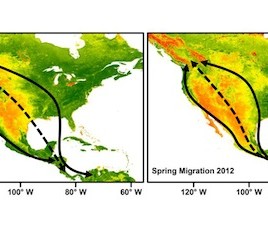
Mixed genes lead to mixed migration
A new study indicates that genetics can have a strong influence on bird migration patterns. Using geolocators strapped to the backs of Swainson’s thrushes researchers were able to map the birds’ migration from British Columbia to South and Central America each year. As expected birds of one population chose one route, while birds of another population chose another. However hybrid […]
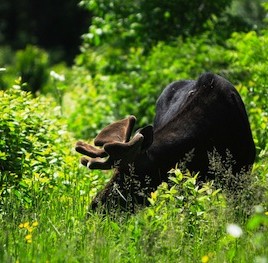
Moose spit de-toxifies plants
Moose and reindeer saliva may inhibit the growth of a toxic fungus that lives inside the grass known as red fescue. The researchers collected saliva from moose and reindeer from Canadian zoos, then applied it to grass that contained the toxic fungus. Their results showed that fungus grew more slowly and in some cases produced […]
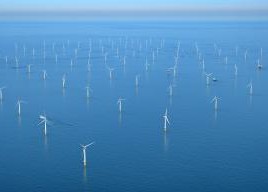
Seals forage near man-made structures
A new study shows that some harbour and grey seals are using man-made wind farms and undersea pipelines as foraging grounds. Seals were tagged with GPS tracking devices off the UK and Dutch coasts. Scientists noted that a few seals – up to 30 per cent in some populations – foraged near offshore wind farms, […]
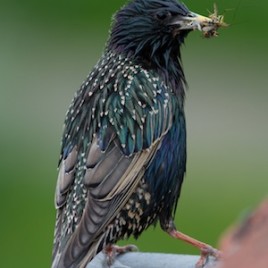
Link drawn between pesticide use and bird declines
Researchers in the Netherlands have drawn a link between use of the neonicotinoid (neonic) pesticide imidacloprid and declines in insect-eating birds. The study found that in areas of the Netherlands where imidacloprid concentrations in surface water were highest – more than 20 nanograms per litre – bird populations tended to decline by 3.5 per cent […]
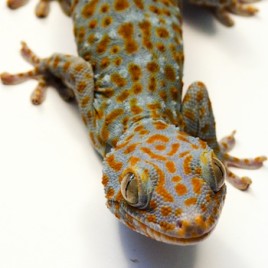
Electrical charges help geckoes stick
Researchers have gained new insight into how geckos are able to walk on almost all surfaces, even upside down. Previous studies have attributed the stickiness of gecko toe pads to a type of force called van der Waals attractions that acts on the tiny hairs – called setae – covering the bottom of geckos’ toe […]
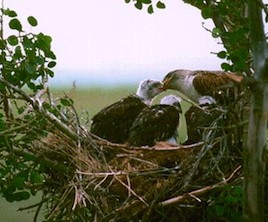
Hawks and owls have trouble as single dads
Some male hawks and owls have trouble adapting their behaviour in order to raise chicks on their own, a new study finds. In breeding pairs, the male is the primary provider of prey for their young while females tear the prey into right-sized chunks and also brood the chicks. (i.e. use their bodies to shield […]
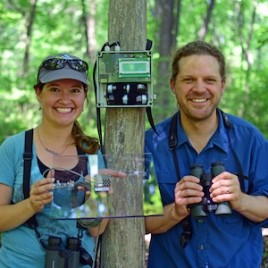
Night-time squawking helps track bird migration
New audio recordings confirm that Lake Erie is not a barrier to bird migration, but that birds pick their routes so as to stay above islands if possible. Migratory birds fly at night, so the team used audio recordings from the north shore of Lake Erie and from Pelee Island — in the middle of […]
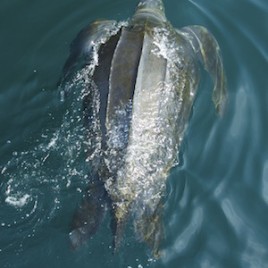
Digesting dinner keeps leatherback turtles warm
Scientists have determined that metabolic heat produced from digesting prey is a key component of what keeps leatherback turtles warm in the cold waters off Canada’s Atlantic coast. Researchers attached temperature monitors to seven leatherback turtles off the coast of Cape Breton and discovered that they cool down during the day (most likely due to […]
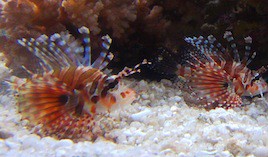
Lionfish hunt in groups
Like their namesakes on land, lionfish demonstrate cooperative hunting, according to a new study. Lab tests showed that lionfish use a unique ‘flared fin’ display to alert other lionfish to the presence of prey. They then work together to herd the prey into smaller areas and take turns striking at the group. This type of […]
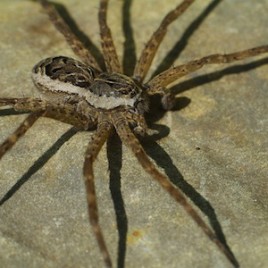
Fish-eating spiders found all over the world
It’s known that some spiders can catch and eat small fish, but a new survey of worldwide sightings shows the phenomenon is more widespread than previously thought. The survey found that spiders from up to five different families prey on fish, and that fish-eating spiders exist on every continent except Antarctica. One species, the striped […]
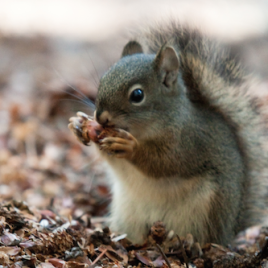
Do seed-eating squirrels impact the whole forest?
A new study shows that trees that store lots of fire-resistant seeds to prepare for forest fires end up attracting more seed-eating red squirrels, which provokes a cascading effect on the ability of forest to grow back after a fire. The study relies on three years of field study in Yellowstone park and applies to […]
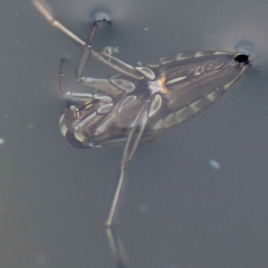
How bugs decide when to fly the coop
Many animals seek new habitat if they are too crowded or if there are too many predators, but new research suggests that the effect of these two factors can’t easily be separated. Researchers filled artificial pools with backswimmers, insects that normally swim but that can fly to a new pool if stressed. Introducing a predator […]
